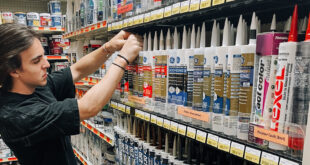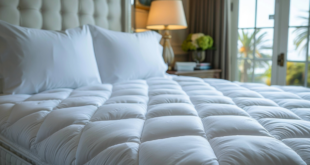In most any home improvement store, core categories do the heavy work. They pull in a steady stream of customers and prompt project sales that fill up the shopping cart. But many retailers have found success outside standard hardware fare, too. Handled correctly, these categories can pull their weight in attracting additional customers and generating impulse purchases.
Hardware Retailing spoke with two retailers about how they sell a few of their best-performing niche categories. If you’re looking to create your next hero category or improve what you already have, use their tips to guide your own steps forward. Some of these strategies apply regardless of the size of your operation. Some of their advice even transcends a particular category; apply it to the unique hero at your business.
Welcome to Toy Town
At the General Store in Spokane, Washington, hardware might be the main course, but there are plenty of other options for shoppers. Included on the 40,000-square-foot salesfloor is a full clothing department, fishing and sporting goods, auto parts, and most recently, toys.
Mark McKee, general manager, says they’ve always had a small selection of toys, but they expanded the department significantly last year after a local toy store closed. Now, toys cover 3,000 square feet of the store’s second floor.
Toys have been a category hero because they’ve helped the General Store become a destination for families and have boosted impulse sales. McKee displays toys near the checkout counter and in prominent areas at the front of the store. Impulse merchandisers may prompt some customers to make the trek upstairs to the full toy department, or at the very least, create powerful incentives to put one more item in the shopping cart and raise McKee’s average transaction size.
How can you be successful selling toys when general merchandise stores like Target and online retailers seem to have cornered the market?
“We are the largest local toy store in the Inland Northwest, and I think people want to buy local,” McKee says. “We have the mainstream vendors with the popular toys, but we also carry a lot of unique toys customers won’t find elsewhere.”
For example, the store has a large selection of puzzles and playing cards, along with toys from local vendors that Amazon doesn’t carry.
Outfitting the Office
Even if hardware isn’t on your shopping list, Red Oak Hardware may be your destination.
Owner Mark Jackson has created a 20,000-square-foot emporium anchored with a full home improvement store, supplemented with gifts and greeting cards, large appliances, local spirit wear, automotive, RV maintenance, sporting goods, a pro tennis shop and more.
For the past 20 years, an office supply store has been one of Jackson’s category heroes, especially as he’s filled it out with add-on services. Recently, he partnered with a shipping vendor that allowed him to become a pickup and delivery point for UPS packages. Customers can ship packages from the store or have them delivered there for pickup at no extra charge. In addition to using the shipping service, customers can make copies, send faxes and purchase any shipping supplies they need.
“Office supplies have always been a stable category for us, but last year, sales in that area went up significantly as a lot of folks didn’t want to go into the city to shop. They felt safer staying in their own community and using our curbside pickup and free delivery options,” he says. “Because we offer the shipping service, we’ve had a lot of people coming in the store who might not normally come in.”
Amp Up Your Electronics
It’s not unusual for a home improvement business to stock a few electronics accessories, such as plugs and cables, as part of its electrical category. Jackson takes it a step further by offering TVs and stereos, along with all the necessary accessories for hookup. What makes this category a hero is his free delivery and installation. The service is particularly important with the newer ultra high-definition TVs, which can be complicated to set up for some customers.
“Our installers can properly set up the TV, including connecting to the cable signal and programming it so that by the time they’re done, the customer is ready to hit play,” he says. “This past year, we’ve done really well with TV sales.”
Competing with big-ticket, sometimes price-sensitive items like TVs requires Jackson to be savvy when he buys. He focuses on a broader selection and not going too deep into any SKU, usually three to four of his most popular TVs. He says his initial investment of about $4,000 into the entire electronics department was enough to let him see if it would be viable.
He also expects customers will price shop, so he highlights the add-on value he brings to the category, including the fact that the nearest box electronics retailer is an hour away and that competitors don’t offer free delivery and installation. If customers still insist on waging a price war, he’s empowered employees to try and keep the customer.
“If a customer is concerned about price, employees are allowed to work with them, and often we’ll match the competitor’s price,” he says.
 Hardware Retailing The Industry's Source for Insights and Information
Hardware Retailing The Industry's Source for Insights and Information






